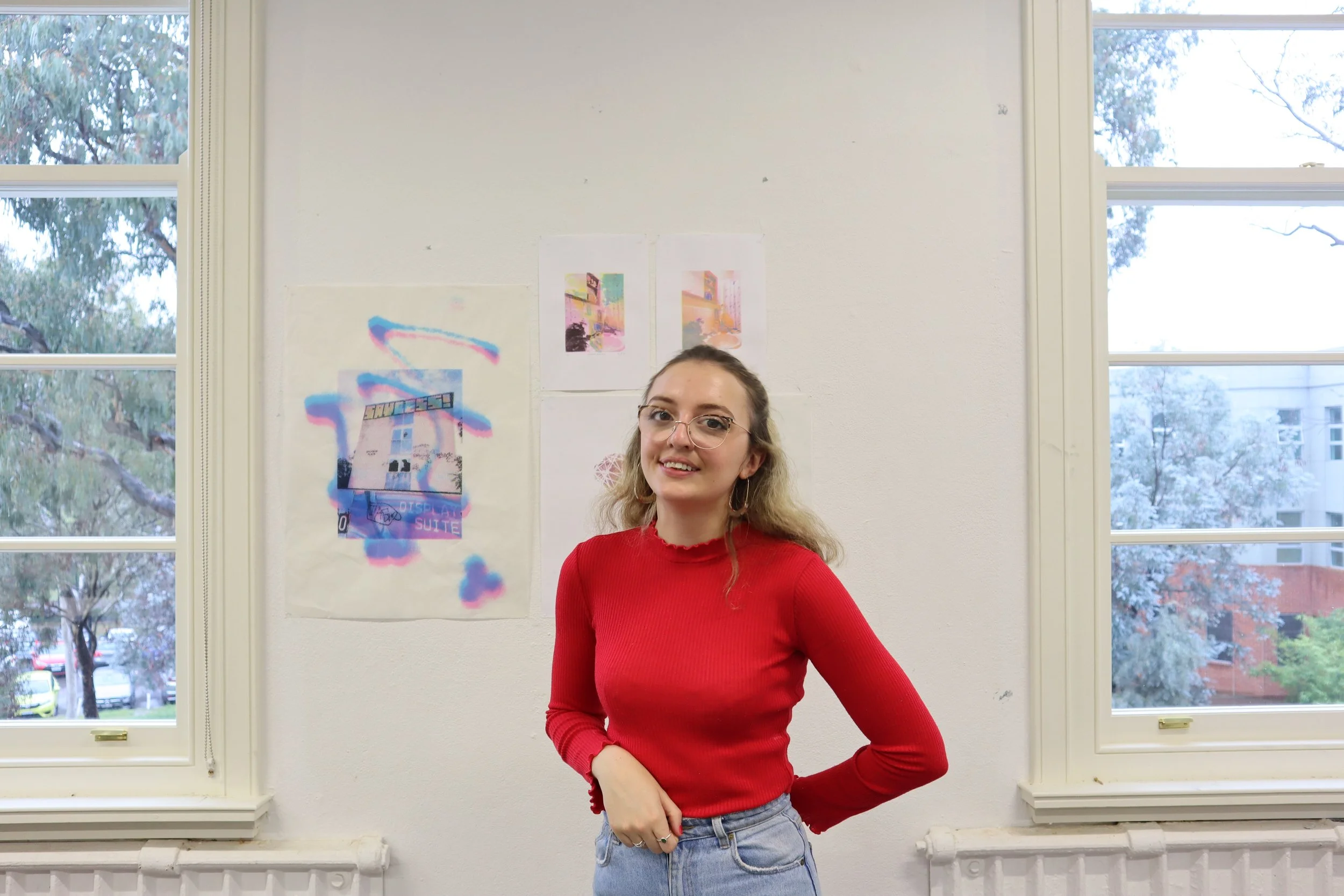Emily O’Neill
Emily April O’Neill (b. 1998 Canberra) is a printmaker currently completing a Bachelor of Visual Art (Honours) and Science at the Australian National University, Canberra. She works with both traditional and contemporary methods of printmaking including screen-printing, etching, and digital printmaking. She has a great interest in science, and this often influences her concepts and practices. In 2021, she created a work In Lockdown that explored perception of time and space in lockdown in the framework of four-dimensional space. This work used light projection, stencils, and animation to create a performative work confined in her bedroom which was exhibited on an online platform. She is currently looking at virtual ecologies and the role data distribution plays in the power networks of virtual ecologies using JavaScript interactive code, projection, and screen-printing.
Tell us about your creative process, what drives your practice?
I often start by finding things I’ve come across that I find interesting and might want to research further. This could be a thought or theory that’s come up in one of my Chemistry or Biology courses or an event that’s happening at the time. At the moment I’ve been really interested in the development of ‘Web3’, NFTs and crypto, which has led to me wanting to greater understand the virtual ecologies we participate in. From there I like to do a lot of readings and start making experiments that are often drawing and print based. Printmaking is a super familiar process for me with a lot of technical aspects that really helps me flesh out ideas I am thinking about.
You are currently studying Visual Arts and Science – two very different fields, but we’re sure they have some interesting overlaps. How do you navigate the intersections between these two areas in your printmaking practice?
In the beginning these started as two very separate things for me that as I got further into my degree kind of morphed together. I’ve found a lot of things I’ve studied in my Chemistry degree influencing my art practice and even visa versa. I’ve always been super interested in science and understanding how things around me work and I feel like my art practice lets me take those super conceptual interests I have in science. I also like how art practice can be used to consider the culture and impact around scientific discoveries and ideas. I often think technology and scientific discovery can move so quickly that we forget to step back and affect the impact it has on our identity and culture.
What is the significance of light and projection in your multidisciplinary practice and explorations into time and memory?
When I was considering thinking about time, I came to the quick conclusion that it was going to be difficult to explore in 2D mediums. Last year I was thinking about the framework of 4D space and structures and how they could be used to understand my own perception of time and space. Light and projection made sense to me to use in this work because it was more interactive, and my presence directly impacted the outcome of the work. I could then take these back into 2D mediums such as drawing and screen printing and explore them further.
Are there any female printmakers | artists that influence you?
A few female print makers that inspire me include Alison Alder, Dr. Rebecca Mayo and Annika Romeyn and then more broadly some female artists that inspire, most which work in the virtual and cybernetic space are Dr. Anna Raupach, Tamiko Thiel, Rewa Wright and Molmol Kuo. But honestly these are just the beginning of the list!
Finally, what exciting projects are you working on at the moment?
I’m currently studying honours and I’m looking at how we interact with virtual ecologies and the power dynamics at play as a result of data distribution. I am looking into visually mapping the networks and systems I think are formed in these ecologies. I am working on a project where I am creating a JavaScript program to create digital collages with user input. I am planning on taking some of these digital collages and screen-printing ‘screen shots’ as a way of taking this work back into traditional media.





